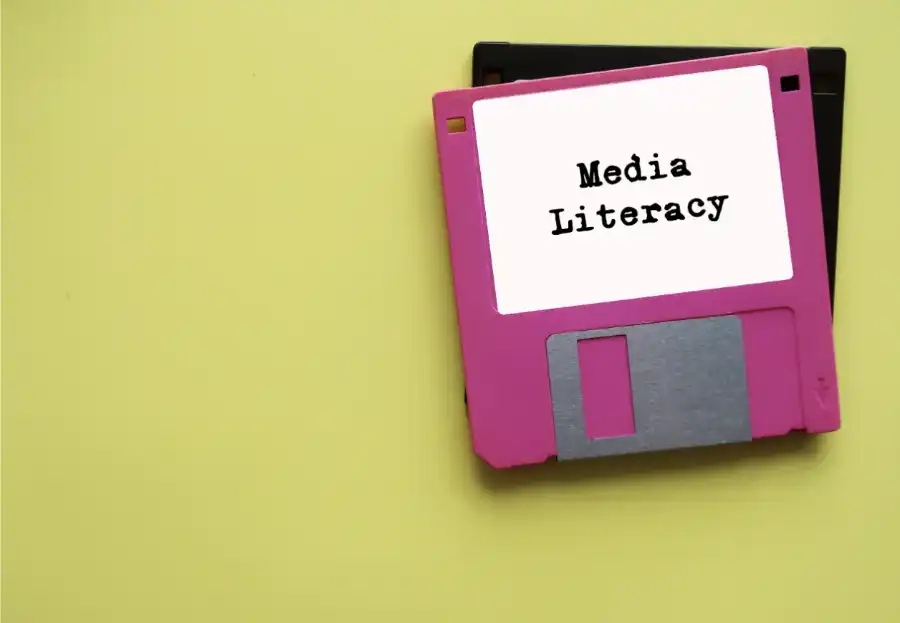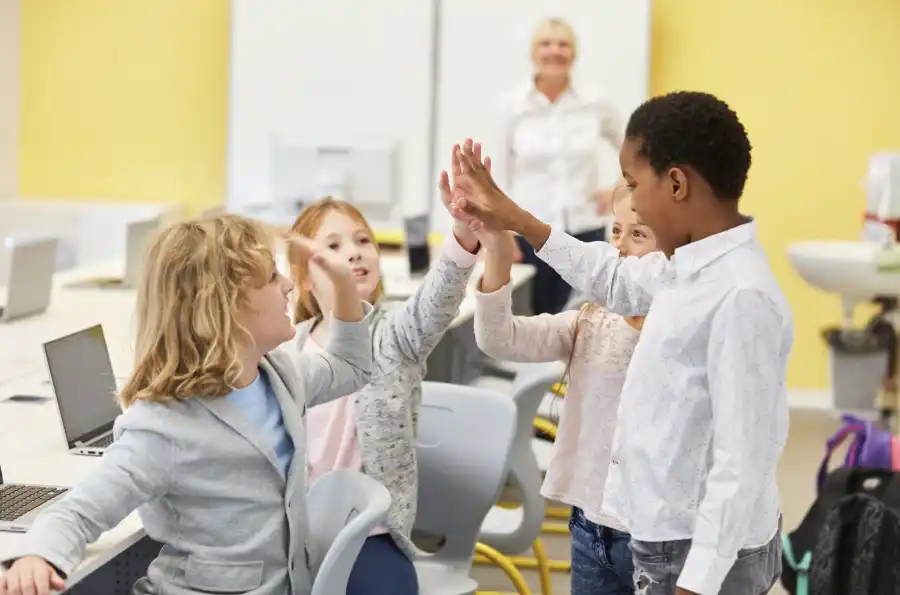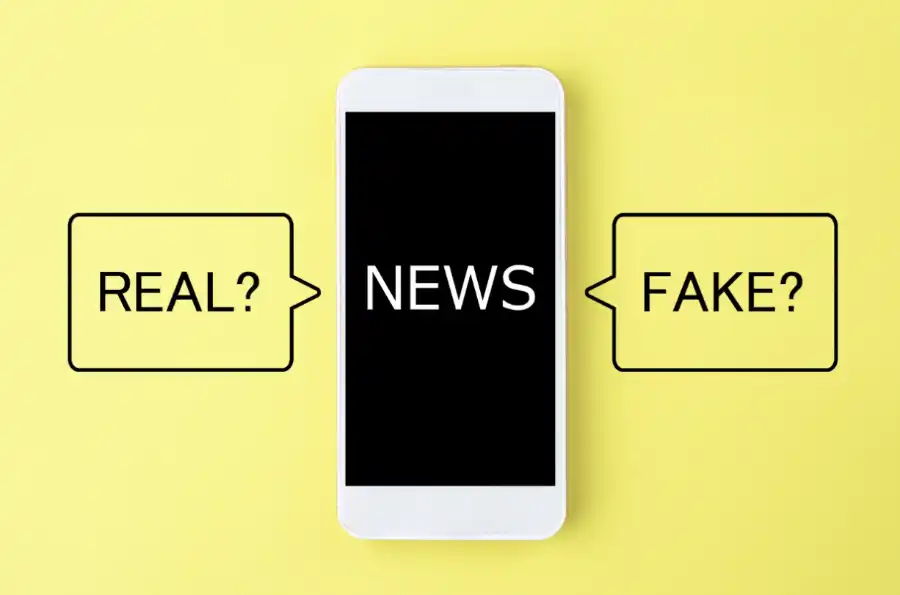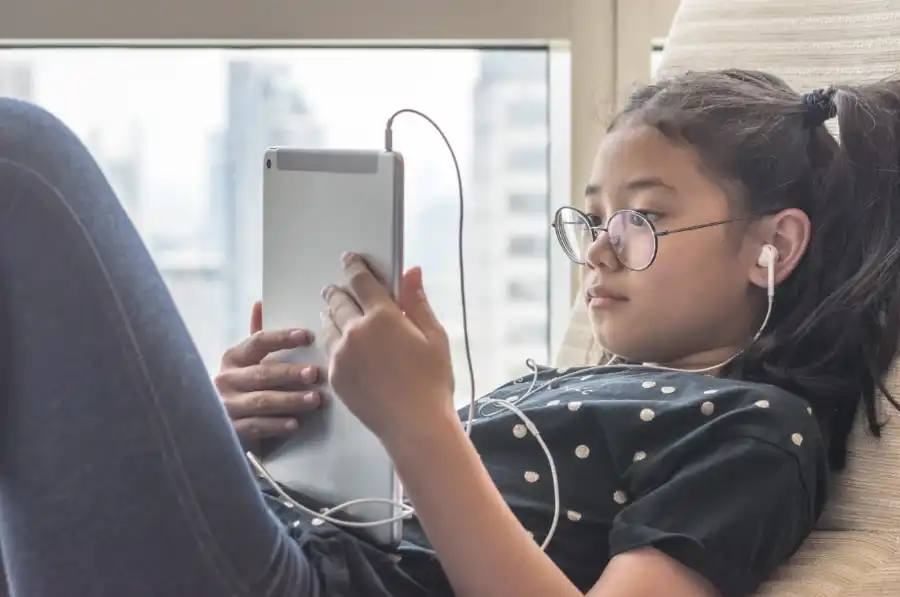If You Read It On The Internet, It Must Be True!
Media Literacy in the 21st Century
Introduction | Background Knowledge | Activities | Extensions | Standards

Introduction
Students are overwhelmed with information, from television commercials to billboards to news reports to social media. Some of the information comes from the school curriculum, but most comes from sources the teacher or parents do not control. Students must learn to absorb the various media messages, evaluate what they are presented with, and make informed decisions.
Background Knowledge

Media literacy is the ability to think critically about the information presented through various forms of media.
The National Association for Media Literacy Education (NAMLE) defines media literacy as the ability to access, analyze, evaluate, create, and act using all forms of communication. This allows students to understand the message, act upon it, and create messages.
Media literacy must be taught. How students interacted with information at the beginning of the 21st century is vastly different from how their teachers learned to interact with media messages.
When information is presented, it is done so with a purpose. The creator has a voice and embedded values and points of view. The message intends to influence the receiver's values, beliefs, and actions.
Students should be able to do five things In order to unpack the information:
- Determine WHO created the message.
- Identify WHAT TECHNIQUES were used to catch attention.
- Determine DIFFERENT WAYS the message could be interpreted.
- Identify WHAT BELIEFS, EXPERIENCES, and VIEWPOINTS are included and excluded from the message.
- Determining WHY the message is being shared.
Learning to think critically about information will prepare students for the future. Media literacy teaches students to look at information critically and empowers them to be deliberate users and creators of information.
Activities

Selected List of Books
- Killer Underwear Invasion: How to Spot Fake News, Disinformation & Conspiracy Theories by Elise Gravel (ISBN 978-1797214917) - This witty and informative graphic novel introduces young readers to the concept of fake news and why people spread it.
- Facts vs. Opinions vs. Robots by Michael Rex (ISBN 978-1984816269) - This text teaches students how to distinguish between fact and opinion.
- Breaking the News: What’s Real, What’s Not, and Why the Difference Matters by Robin Terry Brown (ISBN 978-1426338885) - This book introduces students to various forms of media and teaches the reader how to think critically about the information they receive.
- Petra’s Power to See: A Media Literacy Adventure by Educate Empower Kids (ISBN 978-1733604673) - Petra and her dad explore their city and see multiple media messages around them.
- Does My Bum Look Big in this Ad by Lisa Cox (ISBN 978-1921633058) - This nonfiction text addresses media messages, particularly images in magazines, and how to evaluate them. Self-image in media messages focused on young men is addressed in Media Muscle: Body Image and the Media for Guys (ISBN 978-1921633621).
Web Treasure Hunts
- Students often use the first website that comes up in a search engine. Encourage them to look deeper with Web Treasure Hunts: All About Explorers (TeachersFirst review). This activity leads students through three questions about famous explorers. Students review fake information on the All About Explorers page and compare the research experience to a real research page. These Treasure Hunts are differentiated and offer a range of experiences, from basic fact-hunting to finding answers through inferences and logic. There are printable resources for the students to complete as they research the explorer and the holiday honoring that individual.
Websites for Evaluation
-
Each of the websites listed below is fake. They can be used for website evaluation. Use this checklist adapted from the North Carolina University Library with high school students to guide them in evaluating websites, or download the free website credibility checklist from Literacy in Focus for younger students.
-
Dihydrogen Monoxide Research Division
- This website, best for older students, explores this dangerous chemical…better known as water (H20).
-
Pacific Northwest Tree Octopus (TeachersFirst review)
- Fake websites look credible, providing pictures and facts about this aquatic creature living in the trees of the Pacific Northwest. Will your students be able to identify this as a hoax?
-
Dehydrated Water
- This fake website has a 27-step process at its heart! Although it is set up as a business page, students can analyze it to see if it is reliable.
-
Save the Guinea Worm Foundation
- Will students be outraged by the plight of the guinea worm? This endangered creature is advocated for on this site. This is a single-page hoax, and clicking any of the tabs at the top of the page will take you to a site called Seven Deadly Sins, which is not part of the hoax.
-
Aluminum Foil Deflector Beanie
- This fake site focuses on keeping visitors safe from mind control. It discusses the importance of the mind-control beanie and provides instructions on how to make one.
-
The Ova Prima Foundation
- Which came first, the chicken or the egg? This fake website examines scientific evidence to prove that the egg came first.
-
All About Explorers (TeachersFirst review)
- Of all the fake websites, this one looks the most authentic. A closer examination reveals the false information.
- Teachers created this site to help students learn how to find information on the Internet. It includes five lesson plans, including differentiated treasure hunts that encourage students to fact-check the website.
-
Dihydrogen Monoxide Research Division
Additional TeachersFirst Reviewed Resources
-
Here is a complete list of TeachersFirst-reviewed materials focused on media literacy, including a variety of resources for all classrooms.
- Lesson Planning:
- Fact-Checking: Games and Activities:
Extensions

- Encourage students to create their own research web quests like the ones described above from All About Explorers. Students find a reliable source and a source that is not reliable. They work individually or in small groups to create the activities and questions and then exchange them with a partner or another group.
- Using a topic that is being studied, provide an assignment or activity that allows the students to become “experts” in the subject. Once they have knowledge and confidence, they should create a source that is not reliable. Students exchange sources and point out what is not reliable and why. This can be done electronically or with paper and pencil.
- As a follow-up to students becoming experts, they could play “Two Truths and a Lie”; in this case, the game is played as a whole class activity, and class members vote on which “fact” is the lie. An alternate activity would be to play a bluffing game where one student would share up to 4 or 5 “facts” about the individual or subject researched, and the class would vote if the student was completely truthful or bluffing. This activity could be used with tools such as Mentimeter (TeachersFirst review) or Kahoot (TeachersFirst review).
- Use the 5-steps discussed in the introduction as a framework for students to analyze news articles, social media posts, or videos using IdeaBoardz (TeachersFirst review) or FigJam (TeachersFirst review) as part of a collaborative discussion activity.
- Ask students to create social media posts or newspaper articles, then have their peers evaluate them using the 5-step framework. Share “breaking news” stories using the Breaking News Generator from Class Tools (TeachersFirst review).
- Award students with digital badges to encourage them to look for deceptive or misleading information in the media. Claude (TeachersFirst review) provides a list of badge titles, such as Digital Detective, Perspective Finder, and Bias Buster. Use Canva for Education (TeachersFirst review) or Adobe Express for Education (TeachersFirst review) to create and share digital images for badges.
Correlation to Standards

-
AASL National School Library Standards
- AASL National School Library Standards - Curate Shared Foundation, Think Domain - Learners act on an information need by: 2. Identifying possible sources of information. 3. Making critical choices about information sources to use.
- AASL National School Library Standards - Curate Shared Foundation, Create Domain - Learners gather information appropriate to the task by: 1. Seeking a variety of sources. 2. Collecting information representing diverse perspectives. 3. Systematically questioning and assessing the validity and accuracy of information.
- AASL National School Library Standards - Curate Shared Foundation, Grow Domain - Learners select and organize information for a variety of audiences by: 1. Performing ongoing analysis of and reflection on the quality, usefulness, and accuracy of curated resources.
- AASL National School Library Standards - Engage Shared Foundation, Think Domain - Learners follow ethical and legal guidelines for gathering and using information by: 3. Evaluating information for accuracy, validity, social and cultural context, and appropriateness for need.
-
ISTE Standards for Students
- ISTE Standards for Students - Knowledge Creator - 1.3.c. Students curate information from digital resources using a variety of tools and methods to create collections of artifacts that demonstrate meaningful connections or conclusions.
